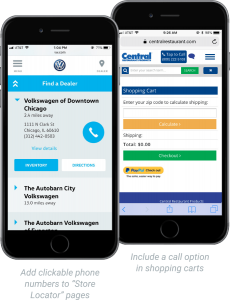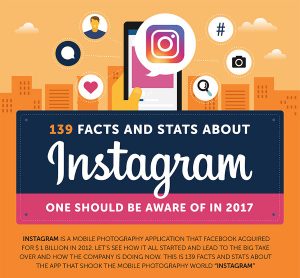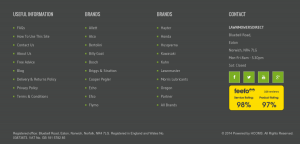— May 7, 2019

rawpixel / Pixabay
What goes into building an in-house agency? This in-depth guide shows you the process for creating an internal agency.
In the past, we’ve talked about choosing between outside and in-house agencies, and the factors that go into making a great internal creative team.
But we haven’t answered the most important question of them all:
How do you build an in-house agency?
An in-house agency might not be for every business, but for some, it can result in better results, more control, and lower costs. Plenty of businesses also share the load, spreading work across several agencies and their own in-house teams.
Building this in-house team isn’t an overnight process. You will have to invest substantially in finding, nurturing, and retaining talent. The best in-house agencies operate just as their external counterparts – fully independent and with substantial creative control.
In this detailed guide, we’ll walk you through the process of building an in-house agency. We’ll share tips to help you hire, manage, and operate an internal agency that brings in stellar results, time after time.

Understand In-House Agencies
Building an in-house agency without fully understanding what it does can be a costly mistake. You can easily waste countless resources hiring people you neither need nor want.
Your first step, thus, is to understand in-house agencies better. What exactly do they do? Why do you need one? And how do they differ from internal creative teams?
Let’s look at the answers.
Understand Your Needs
The case for building an in-house agency rests on two needs:
- Your brand’s
- Your business’
Business and brand needs are different. A business needs to save money, improve productivity, and have more control over its operations.
A brand, on the other hand, needs more creativity and better-optimized campaigns.
It is entirely possible to have an external agency partner that meets your business needs but fails your brand (and vice versa). This partner might have stellar communication and low cost, but their creative work might be lacking.
In this case, the case for building an in-house agency rests on creativity. Any team you build, thus, would be optimized for better creative results, not lower costs (which the current agency partner already offers).
This isn’t merely a matter of results. You can easily have a campaign that brings in great results in the short-term but irreversibly damages the brand in the long-run, as TIME magazine did by running aggressive sales promotions.
So before you start, do the following:
- Understand your business needs. How happy are you with your current agency partner? What are the costs associated with this relationship? How would you rate their communication, productivity, and compliance with requirements?
- Understand your brand needs. Ask: How well does the current brand align with your vision? On a scale of 1-10, how creative are your current campaigns? Do they do an adequate job of building brand equity, or are they simply a vehicle for sales promotions?
- Analyze your marketing spend. Run the numbers on your current marketing spend. How much of your budget goes towards paying your agency partners? How much of it is spent on distribution vs creative collateral?
Essentially, your goal is to fill the gaps left by your external agency partner. If they’re too expensive, find ways to cut costs by bringing in some easy work in-house. If they lack creativity but are great at media placements, prioritize hiring creatives.
How you build your in-house agency will depend a great deal on this analysis. I recommend spending enough time in this evaluation exercise so you know the ins and outs of the business and the brand completely.
Understand What In-House Agencies Do
Most businesses have some understanding or even first-hand experience of working with external agencies.
Internal creative agencies, however, tend to be murkier.
There are two things you need to understand about in-house agencies before you start building them:
1. Internal creative teams vs in-house agencies
It’s a rare business that offloads all its marketing to an external agency partner. Most will have some people on their payroll who will come up with campaigns, create marketing collateral, or direct the focus of their brands.
In fact, over 70% of small businesses in a survey said that they do all their marketing work in-house.
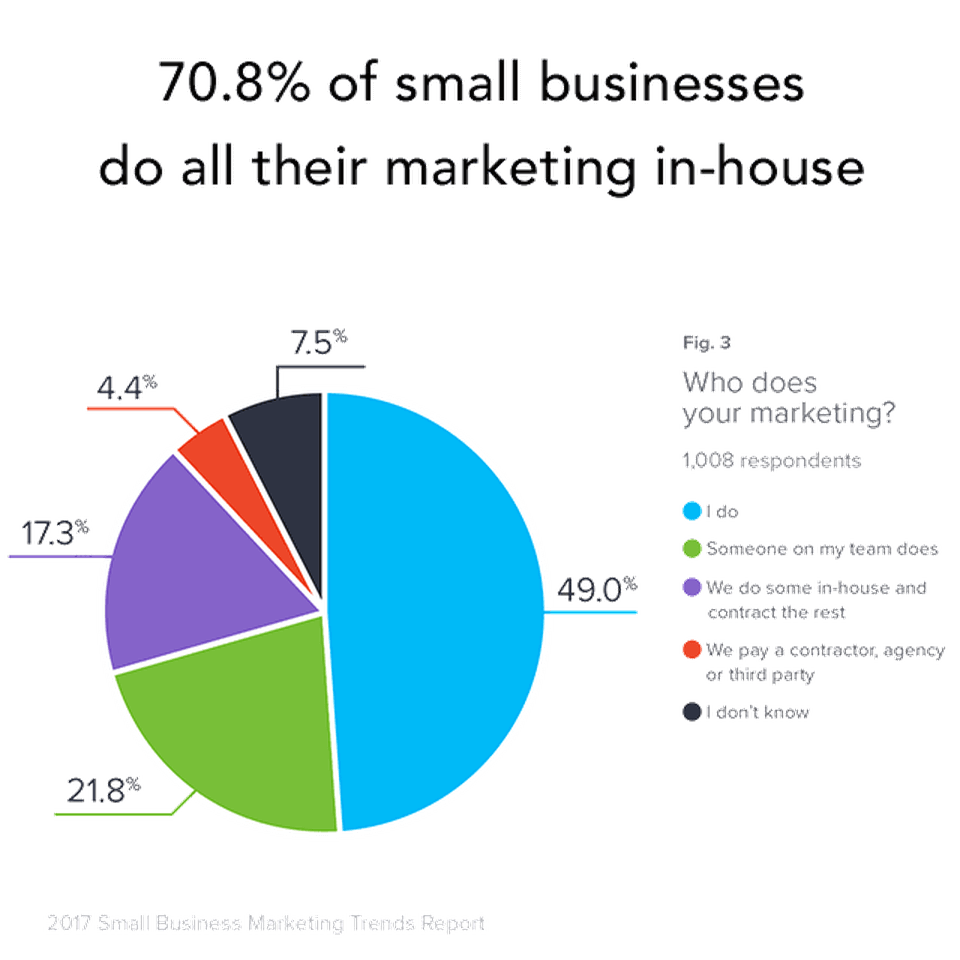
These people essentially make up your “internal creative team”.
Where an in-house agency differs from this internal team is in its size, scope, and organization.
An internal creative team might be loosely distributed across different departments. They might report to separate managers and have limited access to shared resources. It’s not unusual for each department to have its own creatives to handle department-focused campaigns.
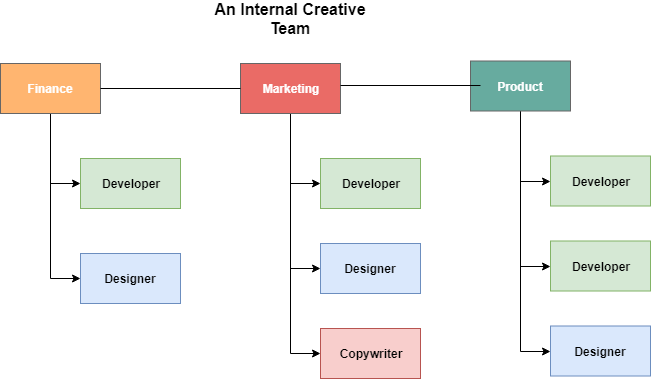
An in-house agency, on the other hand, operates just like a traditional agency. It has designers, developers, and marketers who are organized as a distinct “department”. Irrespective of where the work comes in from, it is directed to this department.
Most in-house agencies even have their own project managers and account managers to deal with projects and senior executives.
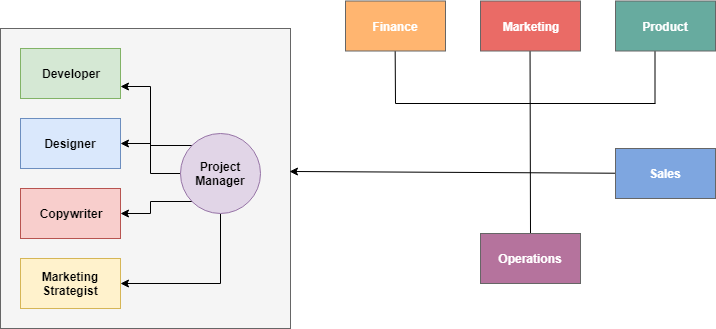
Think of an in-house agency as a more sophisticated, “grown-up” version of an internal creative team. This allows the agency more room to innovate and optimize its operations.
2. In-house vs external agencies
In principle, in-house and external agencies are exactly the same.
Except for one key difference: in-house agencies have just one client – you.
An external agency traditionally serves several clients at the same time. A designer might work on Client A in the morning and switch to Client B in the evening. Project managers will typically juggle several projects spread across multiple clients.
An internal agency, on the other hand, only has to deal with the demands of its employer. It doesn’t have to find work; whatever the business needs created is directed to it. Its account managers report to just a handful of internal stakeholders.
Since internal agencies serve just one client, it changes their dynamics completely when compared to external agencies.
For instance:
- In-house agencies typically have the same benefits and hours as other employees of the company. External agencies, on the other hand, are known for keeping long hours.
- In-house work isn’t always considered as prestigious as external agency work (where people get to work for several high-profile clients at the same time). This means that you often have to pay in-house employees more to offset the lower perceived prestige.
Despite these differences, more and more businesses are going in-house. In an ANA survey, the percentage of businesses with an in-house agency jumped from 42% in 2008 to 78% in 2018.
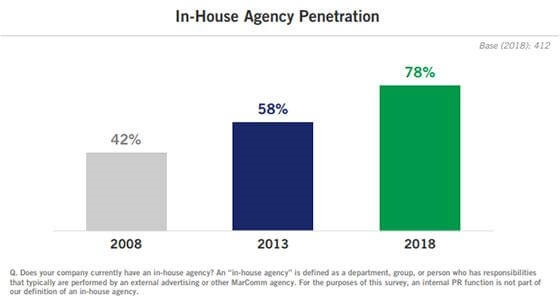
Of course, these businesses aren’t going completely in-house. Most still retain external partners for key creative work but offload some work to their internal agencies.
What Are the Benefits of Internal Agencies?
The shift towards in-house agencies begs the question: what exactly are their benefits? Why are more and more businesses building out their in-house capabilities?
In a survey by ANA, most marketers said that the biggest benefit of going in-house is cost savings. By cutting out the agency overhead, businesses find that they lower their marketing costs.
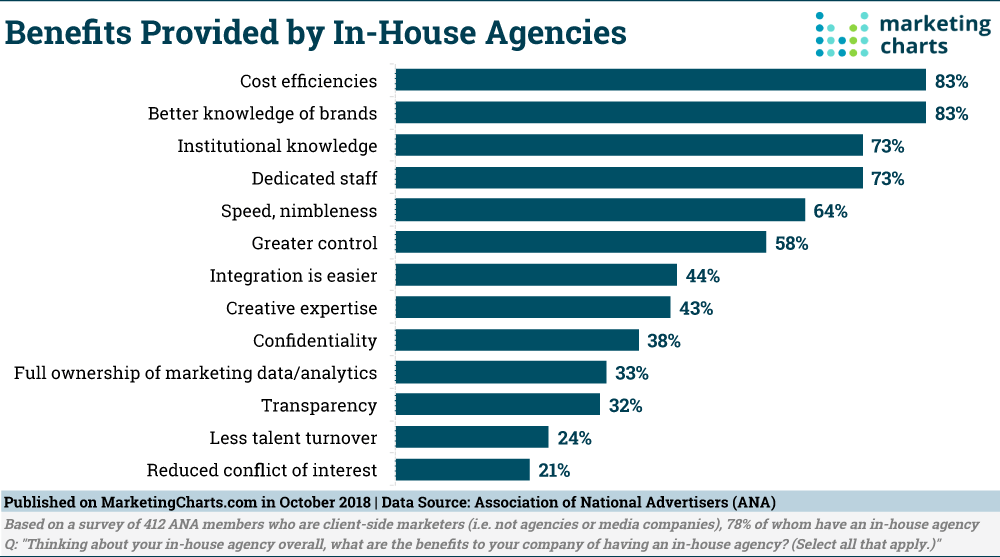
That’s only one benefit, of course. There are plenty of others as well such as:
- More accountability, since in-house agencies report only to one “client” – you.
- In-house agencies are more productive since there are fewer middlemen and more direct communication between stakeholders and creatives.
- On that note, there is also more streamlined communication in internal agencies.
- More transparency, since you know exactly where every dollar is being spent.
- By going in-house, a business gets more control over the creative work as well as the people who work on it. Agencies frequently lose talent, but with in-house agencies, you can control who you hire and fire.
Going completely in-house isn’t for everyone. Most businesses will find that external agencies offer better results.
A much better approach is to spread your work across internal and external agencies. Take advantage of the cost efficiencies of internal agencies for handling scalable work. For the rest, tap into the creative talent at external agencies.
In the next section, we’ll talk about how to organize an internal agency and hire talent for it.

Hiring Talent for an In-House Agency
Building an in-house agency isn’t unlike building a business. The entire process is fundamentally entrepreneurial – find talented people, give them the resources to succeed, and manage them just enough so that they can do their best work.
Thus, while all the traditional advice about hiring still applies, you also have to approach it from the perspective of an upstart agency. Anyone you hire would be an employee of this agency first, your business second.
With this in mind, let’s look at some of the biggest issues you need to address when you hire talent for your in-house agency.
Figure Out Your Organizational Structure
Before you start your hiring spree, map out, at least tentatively, the organizational structure of your in-house agency.
This will help you understand who to hire and in what order. It will also help you zero in on the executives and managers who will be responsible for day-to-day operations.
Most in-house agencies follow the same structure as their external counterparts. Thus, you have separation of talent into “creative”, “production”, and “management” functions, like this:
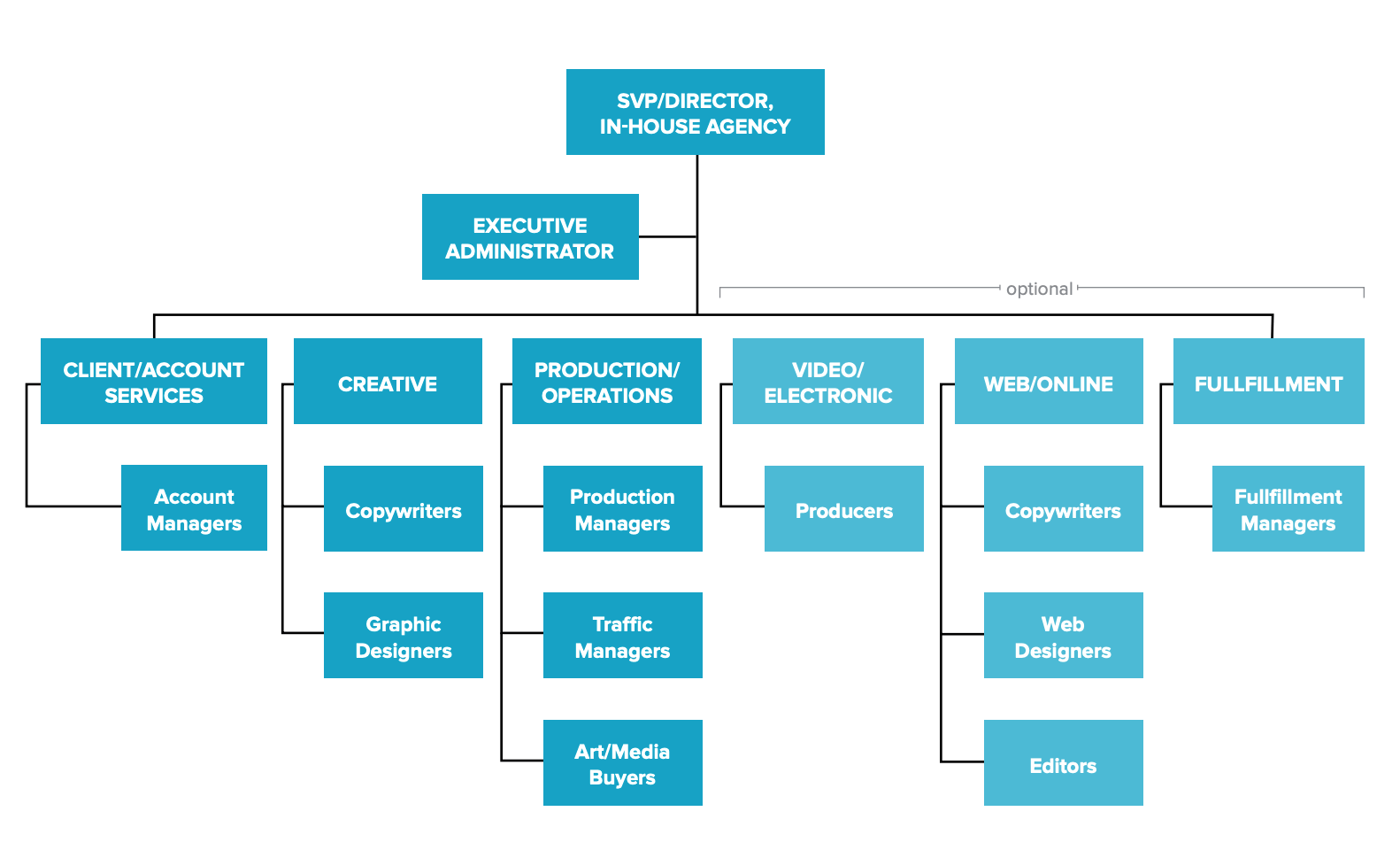
(Image credit: Workfront)
You can change this depending on the kind of work you do.
For example, if your business does a lot of web-focused work, you might want to keep it as a separate department within the agency. Others can simply club it in their “Creative” head.
While you’re at this, also think of the resources you already have. Specifically, ask:
- How will your existing creative talent fit into this new agency hierarchy? What departments will they work in?
- Will you need to hire new managers or will your current managers fit into agency roles?
- Will you need a new executive to oversee the agency operations? If not, do you have a shortlist of existing executives who can take on these duties?
In large companies, you will also have several internal clients. Think about how you will handle requests from all these clients. Will you separate the clients into separate groups? Will you have different account managers for each group?
Of course, you don’t have to stick with this organizational structure, but it helps to zero in on a tentative structure before you start hiring.
Optimize Your Hiring Strategy
When you build an internal agency, you aren’t just competing against your traditional competitors for creative talent; you’re also competing with external creative agencies.
This can make the entire hiring process a massive challenge. External agencies have finely tuned pipelines to bring in exciting candidates, and the luster of working where, say, David Ogilvy once worked.
Why should a young creative choose to work with you instead?
This is why it’s crucial that you develop a clear hiring strategy before you start the hiring process.
This strategy should focus on two things:
1. Your employer brand
Coca-Cola’s ‘Content Factory’, BestBuy’s ‘Yellow Tag Productions’, and BBC’s ‘BBC Creative’ are some of the best in-house agencies in the world.
Notice something common about all of them?
All these internal agencies are operated by some of the world’s most respected brands.
If you’re going to compete against the Ogilvys and Havas of the world, you will have to create a stronger employer brand.
In fact, research shows that most employees study a potential employer’s brand closely before accepting an offer.
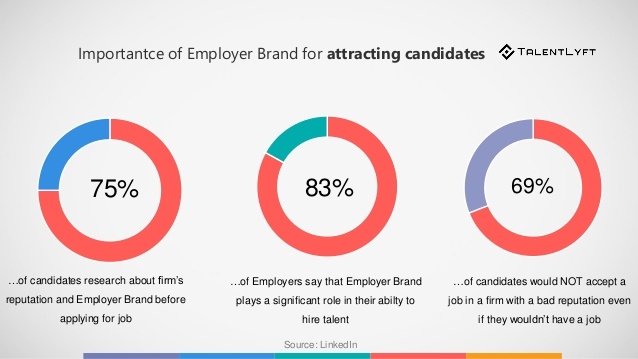
This goes beyond focusing on tangibles such as better salaries and benefits. While these are important, creative employees often want to work on creative and meaningful problems.
Your employer brand, thus, should focus on four things:
- Your mission, values, and philosophy – are you doing substantial, meaningful work?
- What kind of creative problems they’ll work on? Will they get enough creative freedom?
- How does the internal agency fit into the organization? Is it just a cog in the machine or an independent entity with substantial freedom?
- What kind of people work in the internal agency (and outside it)? Are they creative, ambitious, and willing to learn?
Your goal should be to make your answers to these questions sufficiently visible. A compelling ‘About Us’ page is just one step in this direction; you also need a strong presence on the channels potential hires use – Instagram, Twitter, your blog, etc.
For instance, notice how Coca-Cola’s official corporate Instagram account (separate from its consumer-facing account) talks so much about its mission and values? This is meant mostly to build Coca-Cola’s employer brand.
Be prepared to market your brand aggressively to potential hires. That’s the only way to win against consultancies and large agencies without paying double their wages.
2. Where you’ll find talent
This is a question so many businesses struggle with – where exactly do you find great creative talent?
Top agencies typically have extensive pipelines of quality talent. They’ll have established relationships with top design schools, employee referrals, industry outreach, and PR campaigns.
A job posting on Monster.com isn’t enough to win talent away from these agencies.
Although it will take time and resources, creating your talent pipeline can give you access to a steady stream of high-quality creative talent.
Here are some ways to do it:
- Establish relationships with top schools that focus on capabilities you need – design, engineering, etc. These schools can be a great source of high-quality fresh talent.
- Participate in recruitment fairs at a few targeted schools.
- Clean up your online presence. Make sure that your listings on Glassdoor, Angel.co, etc. show a positive impression of your business.
- On that note, try creating some content that puts you in a positive light. A well-populated blog, a strong Instagram presence, etc. improve employee perception of your business.
- Run a PR campaign focusing on how you are a great place to work in. Landing on a few “best places to work in…” lists can do wonders for your brand.
- Go beyond traditional job sites when posting open listings. Try sites like Workamajobs to access niche talent.
- Develop an employee referral program with a focus on incentivizing employees who bring in quality talent.
Your goal should be to develop a large pool of talented creatives. You shouldn’t have to hunt around on LinkedIn any time a new position opens up; you should be able to tap into this pool to get high-quality leads.
Focus on the Right Values
One of the pitfalls of building an in-house agency is diversity.
Or rather, the lack thereof.
External agencies tend to develop diverse skills because they deal with a range of clients. When a creative works on everything from a SaaS product to a children’s toy brand – all within the same week – she quickly picks up new perspectives.
But when you have just one “client”, your skills and experiences can easily stagnate. Instead of pushing the limits, you turn out safe, tepid creative work.
This is why it’s important to focus on the right values in your hiring. Consider the following:
- Diversity: This includes both “implicit diversity” (gender, race, background, etc.) and “acquired diversity” (education, work-experience, life-experience). You want people who can bring a range of experiences to the table, rather than people with similar backgrounds and experiences.
- Learning: External agency pros tend to learn a great deal from a range of clients. Since you can’t replicate that at in-house agencies, you have to look for people who have a history of self-learning.
- Inspiration: Inspiration comes easy when you work in an external creative agency – you work with dozens of clients after all. Replicate the same in your internal agency by hiring people who have a diverse range of interests.
- Collaboration: Collaboration is a key value for any employee in modern business, but creative work depends on it more than most. Find people who value collaboration or have worked in organizations that prized it.
Refer to this article for an expanded list of the values and qualities you should look for in potential employees.
Hiring great employees is only half the battle won; you also have to manage them effectively.
We’ll look at some best practices for building an internal creative agency in the next section.

Best Practices for Building an Internal Creative Agency
What roles should you prioritize in your hiring? What kind of work should bring in-house? How should you organize the agency – both in terms of its formal structure and its actual presence in the office?
These are all pertinent questions to ask when you’re building an in-house agency.
In this section, we’ll answer all these questions and share tips, tactics, and best practices for creating an effective agency.
1. Consider the agency’s physical space
Unless you’re building a 100% remote team, this is a question you’ll have to deal with:
“What space does the agency operate out of?”
This might seem inconsequential but it is actually crucial for the agency’s operations.
An internal agency occupies a rather unique position in any business. It is at once a part of the business, yet distinct from the rest of it. People who work at, say, Coca-Cola’s internal agency (Content Factory) might be employees of Coca-Cola, but they’re also employees of the agency itself.
Because of this, you want the space your agency operates out of to share three characteristics:
- It should be its own separate space within the company, implying the agency’s independence.
- It should be in a prominent but accessible space within the office to make collaboration easier.
- The space should stir creativity – think open plans, brainstorming spaces, etc.
If you have multiple offices, you might want to cluster the agency in a single location instead of spreading them around. Collaboration is key to creativity; localizing everyone in one office will make it easier to work together.
2. Divide duties across in-house and external agencies
The in-house or external agency decision isn’t a binary one. You can have both, dividing duties across them based on your needs and their expertise.
Take Uber as an example. The company brought all its programmatic advertising in-house in late 2018.
Around the same time, it rebranded itself and launched a big ad campaign called “Doors Are Always Opening”. This campaign was handled by an outside agency – 72andSunny.
This exemplifies the changing nature of the client-agency nature. Some work is handled in-house, other offloaded to outside partners.
Evaluate your own needs and capabilities. If you have strong graphic design talent, maybe you can bring all marketing related design work in-house. On the other hand, if you’ve never hired a developer before, you’re probably better off handing over technical duties to an outside agency.
Your goal is to maximize profits without affecting your creative output. Choose whatever works best for each situation instead of picking one or the other.
3. Don’t forget about the managers
Businesses often focus so much on hiring creatives that they forget about getting managers on board.
These roles are as important for the success of any internal agency as the creative department. How smoothly your projects run will depend a great deal on the kind of people who have to manage them.
There are three roles you should hire for in particular:
- Project managers who will be responsible for ensuring that all projects operate efficiently.
- Account managers who will act as the go-between the “client” – i.e. senior executives – and the project team (including the project manager).
Some internal agencies club both these roles into an Account Planning department that handles all planning and research before the project starts. You can do this if you have a relatively limited workload.
If you have a lot of internal clients, it might be smarter to hire dedicated account reps or managers for each internal client group. Else you might find yourself in a situation where one client group hogs all creative resources.
4. Hire for specialized skills
Unless they specialize in a particular skill or industry, most outside agencies have a lot of generalists who focus on broad skills (such as ‘SEO’ or ‘social media marketing’).
This is a poor model to follow for building an internal agency. You don’t have generic needs. In fact, you know your requirements very acutely.
Thus, in your hiring, focus on people who have a narrow band of experience and skills that align with your needs. If you’re a B2B SaaS company with a poor social presence, hire a B2B SaaS social media marketer, not someone who led social campaigns for educational non-profits.
The more you can segment, the easier time you’ll have onboarding new hires.
5. Hire for relationship-focused roles last
There are certain roles that depend on hard, learned skills. Think of developers, designers, and copywriters. Whatever a developer might have learned at an agency or a tech company can be applied to your business relatively easily.
Then there are roles that depend on relationships and networks. Think PR or event marketing. A great PR rep might bring his skills to your business, but it’s not always possible to bring all her prior relationships with him.
Thus, it makes sense to de-prioritize hiring for such roles. Anything that depends on a “network effect” will take a lot of time to show results.
It’s better to offload these skills to an outside agency that specializes in them. Bring them in-house only when you have ample resources to build out capabilities.
6. Create a creative culture
You can hire great managers and staff your agency with top-notch creatives.
But unless you develop the kind of culture that celebrates creativity – something outside agencies do so well – you will struggle to create anything groundbreaking.
Culture is hard to quantify. It is even harder to develop, but it is absolutely vital for creative success.
While there’s a lot that goes into building a culture (you can read more here), there are two aspects of it that are crucial for internal agencies:
- Role within the business: Your internal agency should feel that it actually contributes to your business, and that it isn’t just a cog churning out low-level collateral. The more ownership you give them over the creative process, the more they’ll be able to push the boundaries.
- Room to take risks: A traditional agency’s ability to attract clients rests on its creativity. But internal agencies have no similar incentive. This can cause your in-house team to become complacent. Fix this by giving your team the room to take risks. Encourage them to be purely creative over “getting the job done”.
Creativity has to be nurtured. The more you succeed at creating an environment that encourages creativity, the better results your internal agency will yield.
Over to You
Building an in-house creative agency can seem like a Herculean task. It is certainly not a short or one-time process. You have to approach it like an entrepreneurial venture – find great employees, create a culture where they can thrive, and watch the results pour in.
This guide should give you an understanding of what goes into building an internal creative agency and how you can go about it. By understanding the agency model, hiring the right people, and adopting best practices, you can create something that will save you money and give you more control over the creative process.
For managing your creative team, try Workamajig. Workamajig’s in-house creative agency management system is designed specifically for internal agencies. From handling resources to dealing with projects, this system can do it all.
Business & Finance Articles on Business 2 Community
(126)

